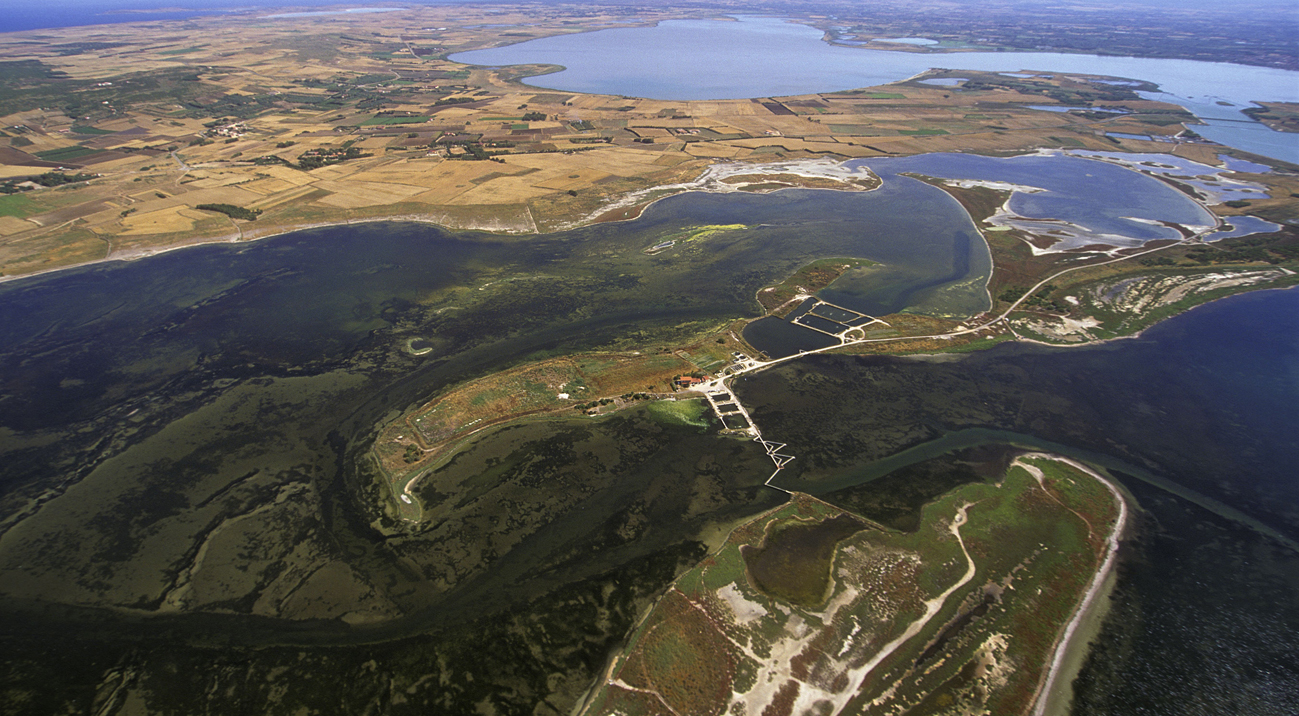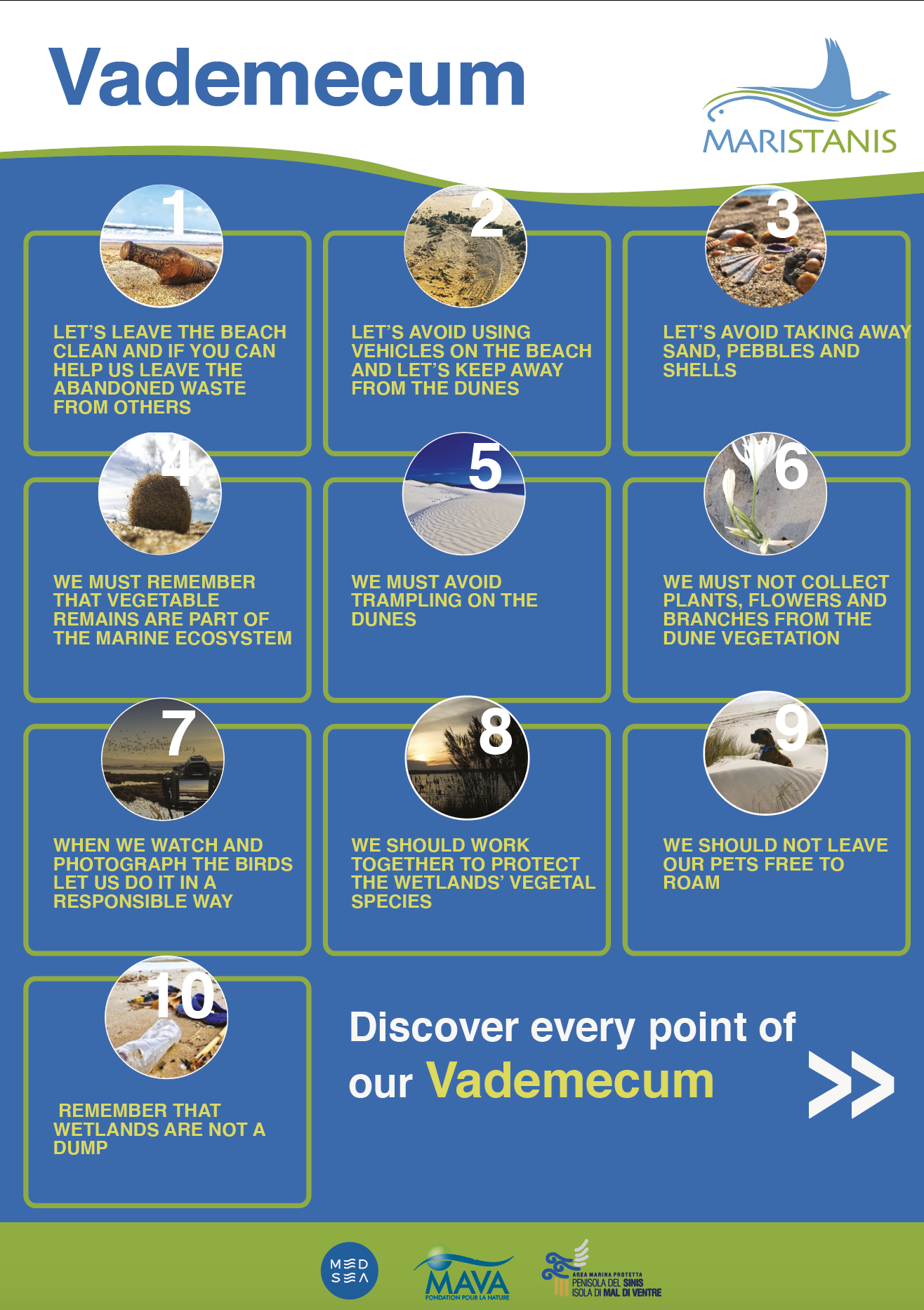Thanks to the co-funding of the MAVA Foundation, since 2017 the MEDSEA Foundation coordinates the activities of all the stakeholders involved in the Maristanis project: the Autonomous Sardinian Region, the Oristano Province, the Marine Protected Area of Sinis- Mal di Ventre Island, the 11 municipalities related to the wetlands and the FLAG “Pescando”. The MEDSEA experts have developed a strategy that with the fundamental scientific support of associations as MedPan, Plan Bleu, PAP/RAC, MedIna, Tour du Valat and Bird Life, intends to transform the economic and cultural potential of the Ramsar sites in the Oristano area into a model of balance between social and environmental needs. The first phase of the project has seen the gathering, reorganization and improvement of the knowledge concerning the Ramsar sites. Only through the creation of a solid scientific literature it is possible to identify all the interventions necessary for the protection and development of the territory.
A shared awareness ties all the stakeholders in a common praxis. Knowledge and a new method of governance can at this point be implemented on the ground, where the strategies become tangible actions that are able to re-establish the harmony between human presence, labor, and the environmental frame constituted by land and water, flora and fauna. Fishing, aquaculture, agriculture, livestock, tourism and craftsmanship become places where new practices and proposal are assimilated and turned by the MEDSEA team into new projects. MEDSEA support the institutions throughout the research for funding and the projects’ realization.
The small circle hosting a new relation between man and environment, prosperity and beauty, gradually broadens embracing the surrounding territories and their populations, now aware and proactive subjects in a system of sustainable development that can constitute a model for other wetlands in the Mediterranean basin.
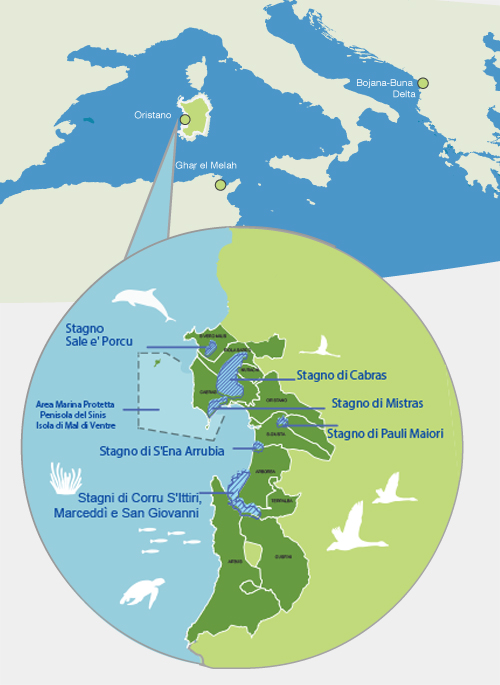
Ramsar sites of the Oristano's Gulf
The Gulf of Oristano boasts 7,700 hectares of Ramsar wetlands of international importance (over 60% of Sardinia's entire heritage), which stretch along 200 km of coastline from Capo Mannu to the lagoon of Marceddì.
Wetlands are
- precious biodiversity reservoirs due to the presence of numerous animal and plant species,
- play an important hydrogeological and natural water-treatment function.
- represent a remarkable resource for fishing and tourism.
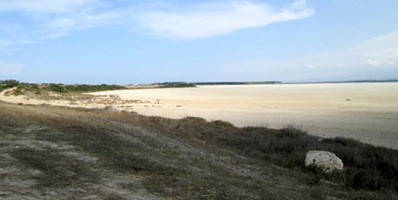
Stagno di Sale'e Porcus (330 ha)
The site is one of the most important wetlands in the Mediterranean for staging flamingos. Various other migratory waterbirds stage and nest at the site.
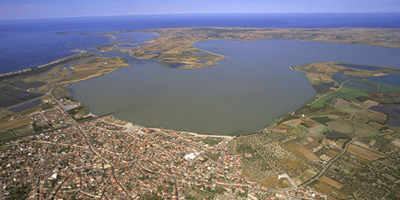
Stagno di Cabras (3.575 ha)
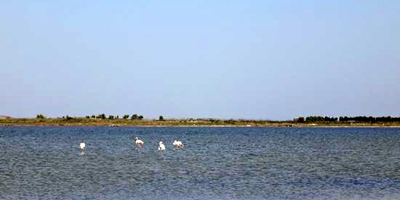
Stagno di Mistras (680 ha)
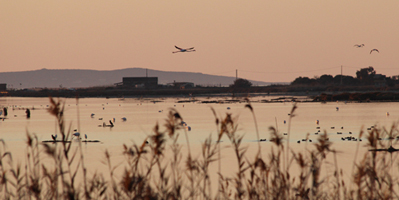
Stagno di S'Ena Arrubia (223 ha)
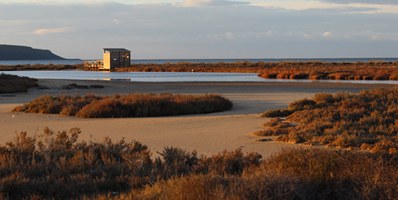
Stagno di Corru S'Ittiri, Stagni di San Giovanni e Marceddì (2.610 ha)

Stagno Pauli Maiori (287 ha)
MARISTANIS EDUCATIONAL
During your stay you can protect the places you have learned to love through small but significant actions.
App "Save water - MARISTANIS"
Water is precious!
Sardinia has always had water supply problems: there are no natural lakes or glaciers and the rivers are mainly torrential and seasonal. The main source of water supply is rainwater. The rainwater is collected in several artificial reservoirs built during the last century.
Climate change, however, is putting this system at risk with increasingly scarce and irregular rainfall, alternating intense rainfall (often floods) with long periods of drought. Moreover, the increase in the average temperature increases evaporation, further reducing the accumulated stocks.
Underground aquifers may be an available source, but continuous abstraction for various uses (including tourism) reduces the flow rate. These phenomena are particularly pronounced in the coastal areas of Oristano.
In addition, in coastal areas the withdrawal of groundwater facilitates the intrusion of seawater: the water that is extracted has high salt content making it unpleasant and, if used for agricultural purposes, it deposits a layer of salt on the ground, depleting it, and accelerating the phenomena of desertification already underway.
The withdrawal of groundwater has negative effects on wetlands: groundwater is the main source of freshwater supply of ponds and lagoons.
A reduced water quantity causes the worsening of the quality because scarcity increases the concentration of pollutants; this situation could cause negative effects on our wetlands: especially in the summer months, our wetlands suffer from eutrophication phenomena.
So, please, remember to use water consciously, without wasting it and without polluting it.
Do you want to know how to do it? Our App "Save water - MARISTANIS" could provide you useful advice.
Become a friend of the wetlands too! Follow the links below to access the Android and iOS versions available in 4 languages (Italian, English, French, Spanish).
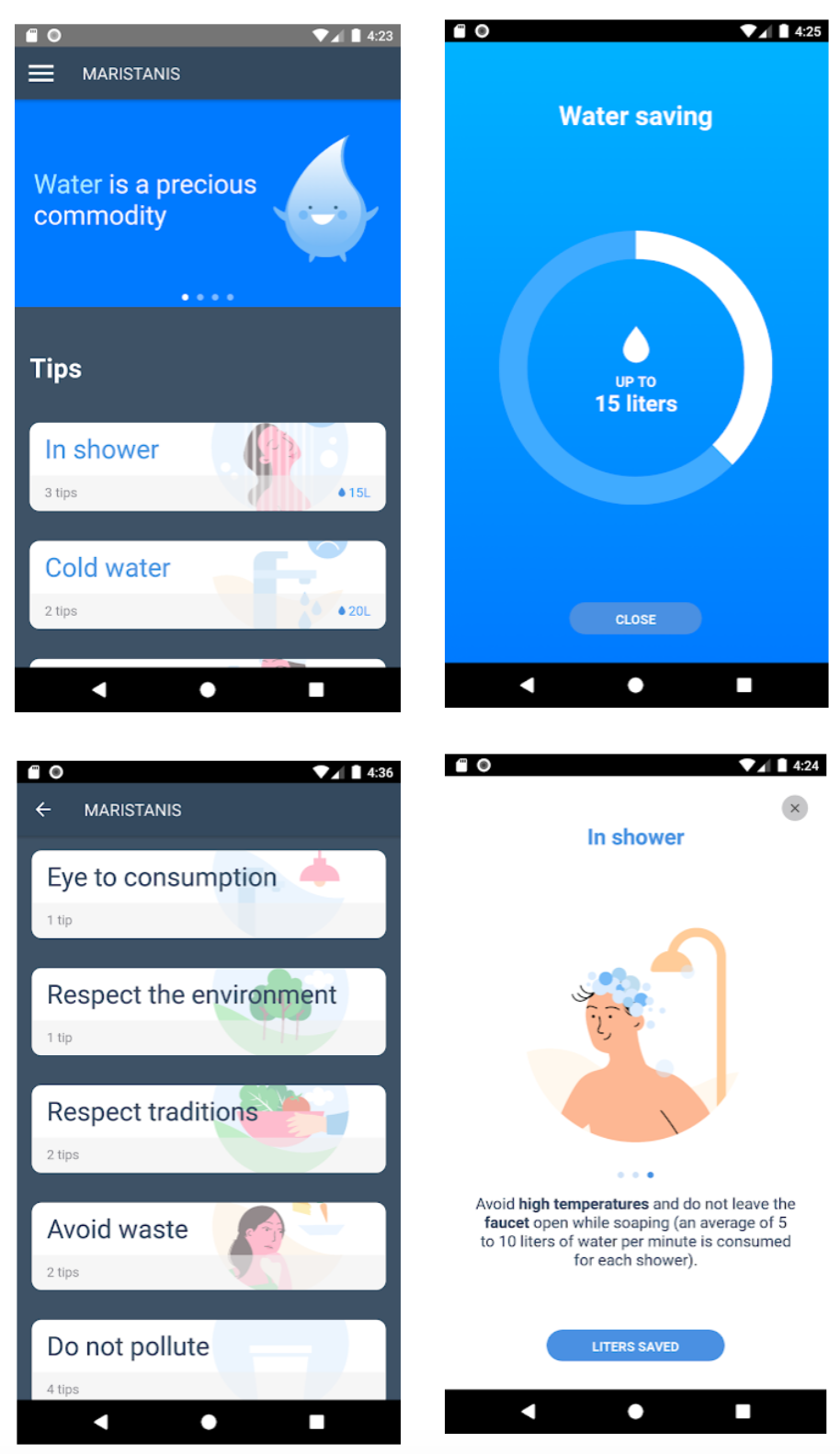
App Acqua Check - Maristanis
Some studies indicate that Italian hotels consume between 500 and 650 litres of water per presence, more than twice as much as the civil sector.
Tourism can therefore have a significant impact on water resources, especially in the coastal areas of the Mediterranean regions, where water resources have always been scarce due to recurrent periods of drought and are now at risk from the consequences of climate change.
In Sardinia, in tourist areas, the population increases fivefold in summer, but water resources remain unchanged and are collected in artificial reservoirs in winter and spring. The climate change, however, makes rainfall uncertain and the risk of having to suffer restrictions on water supply is high, with considerable inconvenience both for the population and for agriculture and tourists.
In these cases, the use of groundwater is increasing, with an increase in groundwater salinisation, a widespread and worrying phenomenon. It is mainly the bodies of water, including coastal wetlands, which are not receiving sufficient supplies from either surface or groundwater.
We must all therefore become more virtuous.
Acqua Check is an app that allows facility managers to assess the benefits of investing in water-saving equipment and devices.
Acqua Check needs some information about the appliances and devices that use water in your facility to calculate how much you could save if you used less water.
Acqua Check can tell you how much it costs you and how much time you recoup your investment and how much water and money you save.
This application was developed by the MEDSEA Foundation as part of the MARISTANIS Project, co-funded by the MAVA Foundation, dedicated to the protection and sustainable development of the Oristano wetlands, which are recognized as areas of international environmental value and are protected by the Ramsar Convention.
This App, together with the App Save Water - Maristanis, is the toolkit for the reduction of water consumption in tourism. If you are a tourist facility, please contact us to have the informative material on the App.
Click below to download the Application (only in Italian):


